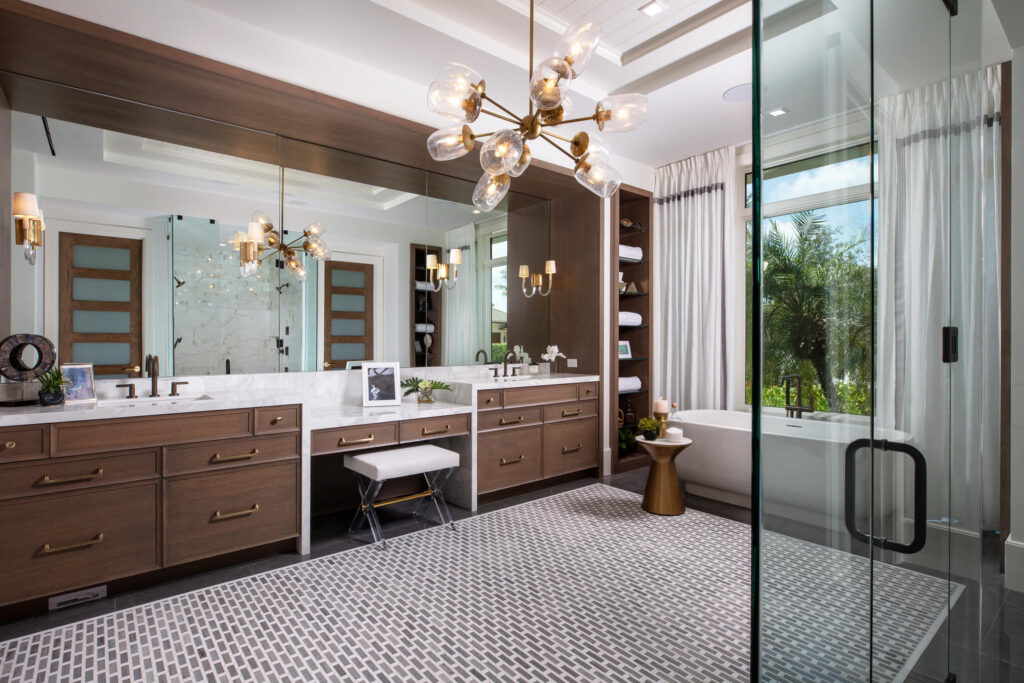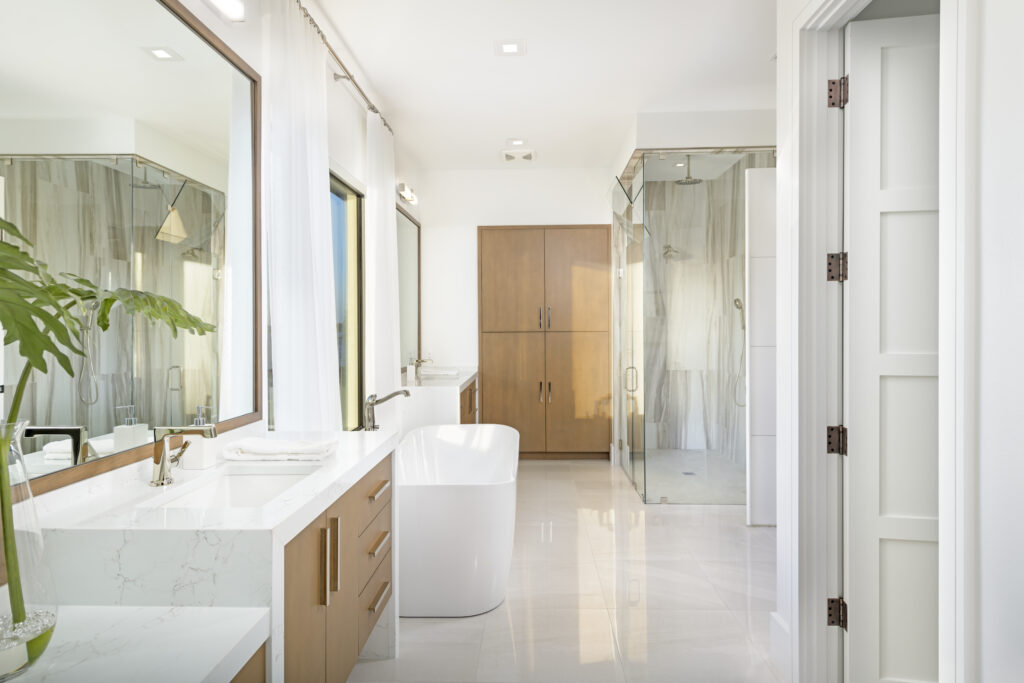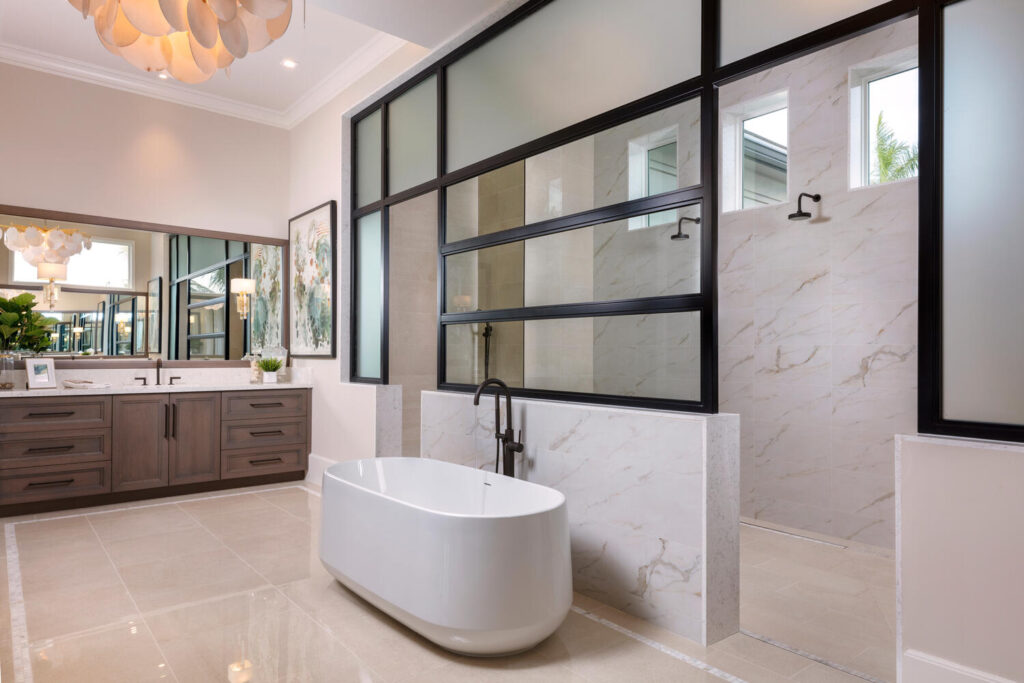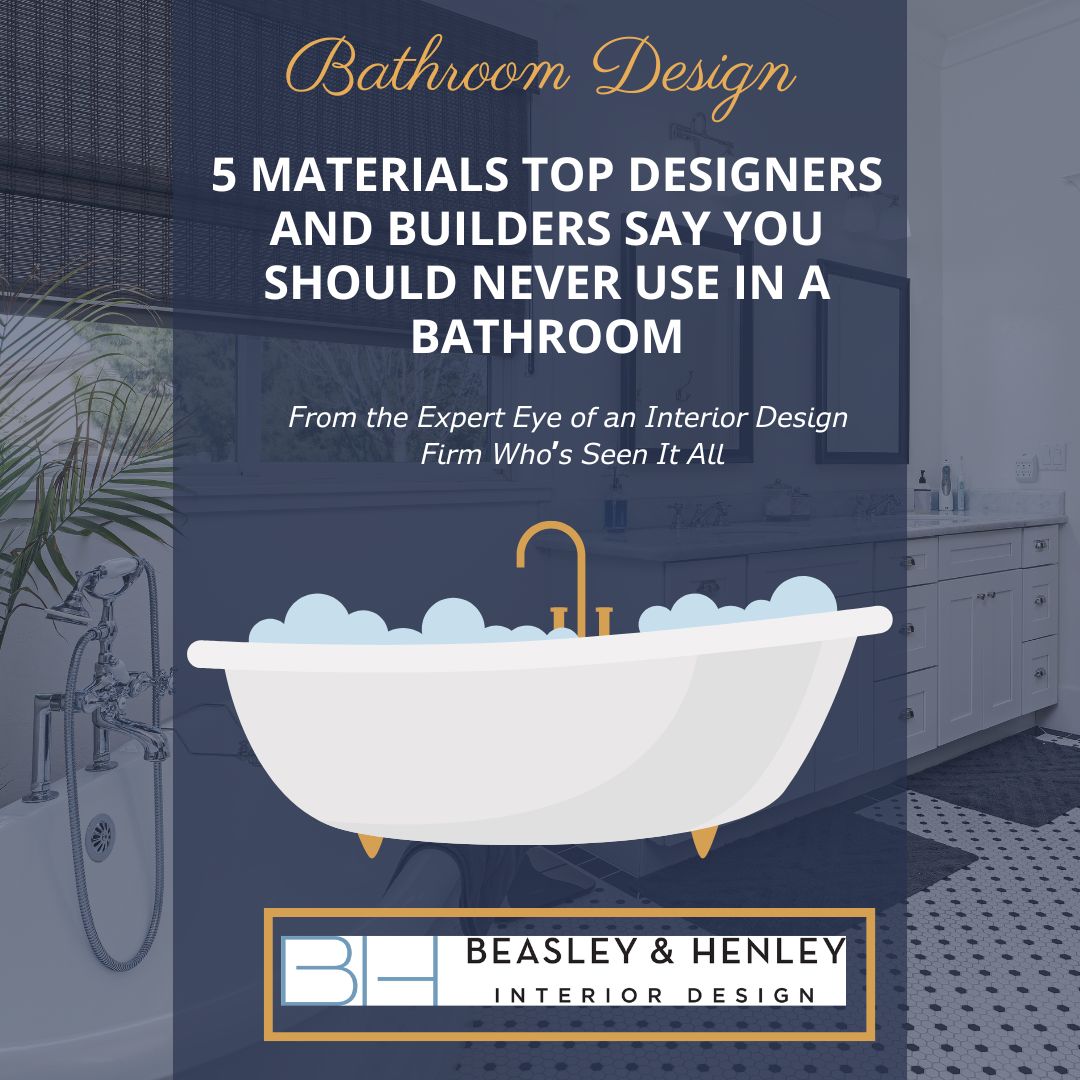5 Materials Top Designers and Builders Say You Should Never Use in a Bathroom
𝘍𝘳𝘰𝘮 𝘵𝘩𝘦 𝘌𝘹𝘱𝘦𝘳𝘵 𝘌𝘺𝘦 𝘰𝘧 𝘢𝘯 𝘐𝘯𝘵𝘦𝘳𝘪𝘰𝘳 𝘋𝘦𝘴𝘪𝘨𝘯 𝘍𝘪𝘳𝘮 𝘞𝘩𝘰’𝘴 𝘚𝘦𝘦𝘯 𝘐𝘵 𝘈𝘭𝘭

When designing a bathroom, it’s easy to get swept up in the aesthetics—spa-like showers, sculptural tubs, moody lighting—but the real magic lies in what’s behind the beauty. As an interior designer working alongside seasoned builders, I’ve seen some truly dazzling (and disastrous) bathrooms over the years. Trust me: not all materials are made for steamy, splashy, high-humidity spaces.
Here are five materials you should never use in a bathroom—unless you’re a fan of mold, mildew, and major regrets.
1. Hardwood Flooring – A Beautiful Disaster Waiting to Happen
Hardwood in a bathroom sounds luxurious, and yes, it looks absolutely stunning…for about six months. But moisture is wood’s mortal enemy. No matter how well-sealed, water will inevitably seep into seams and swell the boards, leading to warping, cracking, and in the worst cases—mold between planks.
Builder’s insight: Even engineered hardwood isn’t immune. Instead, opt for luxury vinyl plank or porcelain tile that mimics wood grain. You’ll get the warm look without the soggy aftermath.

2. Glossy Ceramic Wall Tile on the Floor – Slippery When Stylish
We love a sleek, glossy wall tile—it catches the light, looks clean, and adds instant glam. But putting it on the floor? That’s a slip-and-fall lawsuit just waiting to happen. When wet, glossy ceramic becomes a skating rink, especially dangerous in high-traffic or kid-friendly bathrooms.
Designer tip: Always use matte-finish or textured tiles with a slip rating (look for a COF rating of 0.42 or higher) for bathroom floors. Save the gloss for your backsplash or shower walls.
3. Wallpaper (That Isn’t Vinyl) – Peeling Problems Ahead
Traditional paper-based wallpaper simply can’t handle the humidity of a bathroom—especially in powder rooms without proper ventilation. The moisture causes it to bubble, peel, and fall apart over time. Not to mention, mold can grow quietly underneath it.
What to do instead: Use vinyl-coated or moisture-resistant wallpaper designed specifically for bathrooms. You can still get bold patterns, metallics, or botanicals without compromising durability.
4. Unsealed Natural Stone – High Maintenance Heartbreak
Marble and limestone are bathroom eye-candy, no doubt—but here’s the truth: these porous stones absorb moisture, oils, and even dyes from your shampoo. Without regular sealing, they stain and etch with every little splash. And trust me, water rings on your marble vanity are not the kind of patina you want.
Builder-approved alternative: Consider quartz or porcelain slabs that give you the same luxe look with zero stress. They’re non-porous, easier to clean, and immune to soap and water drama.

5. Flat Paint – A Matte Finish That Can’t Handle Moisture
Flat paint may look sleek and modern in other rooms, but in a bathroom? It’s a recipe for streaks, stains, and moldy corners. Flat finishes are highly absorbent and lack the protective qualities needed for steamy environments.
Designer favorite: Use satin or semi-gloss finishes instead. They’re more resistant to moisture, easier to clean, and reflect just enough light to keep your bathroom feeling fresh and bright.

Bathrooms are one of the most demanding spaces in a home. It’s not enough for materials to look good—they need to perform under pressure. By avoiding these five problem-prone materials, you’re not just designing a beautiful bathroom, you’re building one that lasts.
Remember: Form is fabulous, but function is forever.
Let’s design smarter. Your dream bath deserves materials as hardworking as they are beautiful.




